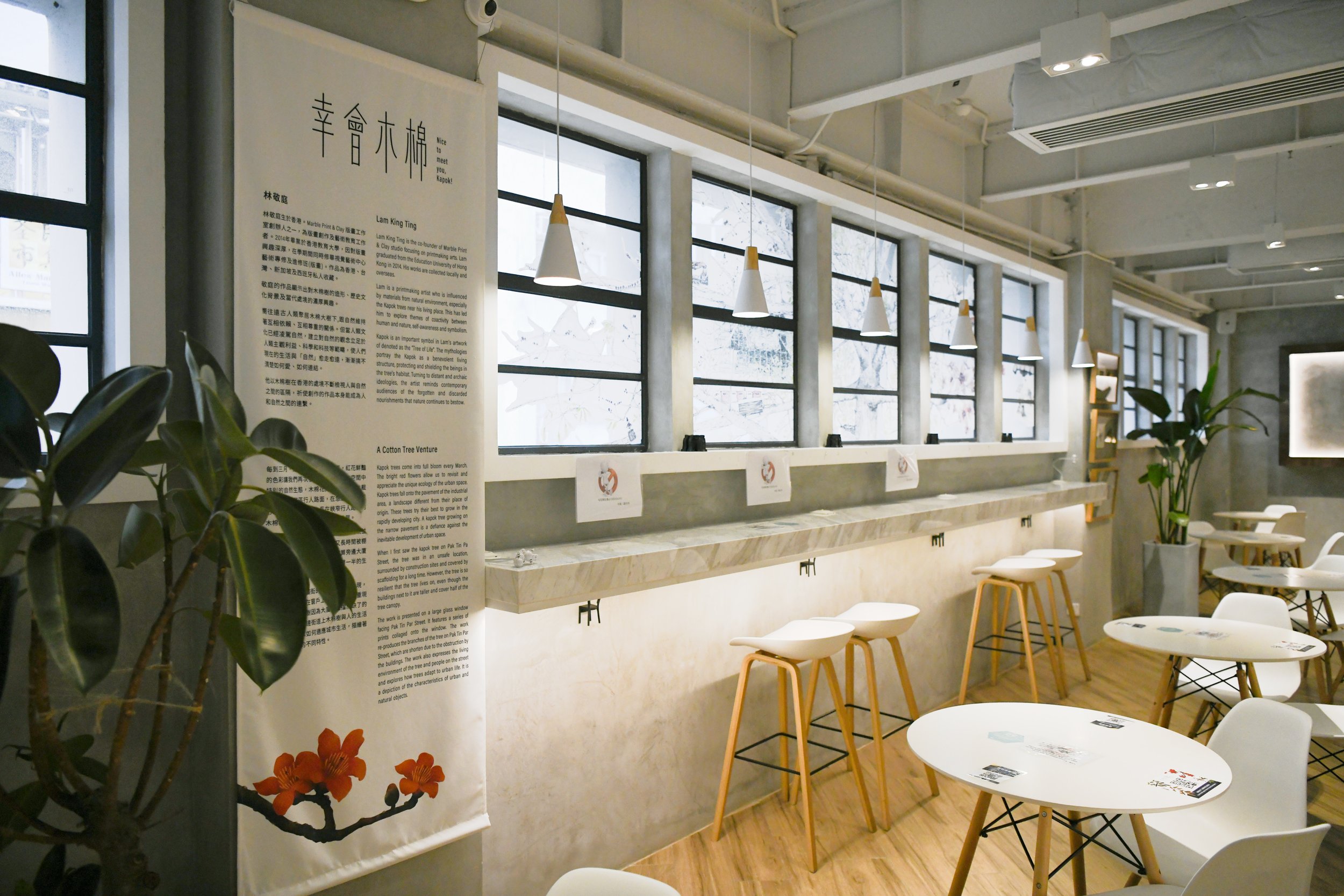每到三月,是木棉花盛開的季節,紅花鮮豔的色彩讓我們再次發現和欣賞在城市空間中特別的自然生態,木棉花掉落到與原生地截然不同的工業區行人路面,在急速發展的城市中盡力成長。一棵生長在峽窄行人路上的木棉樹,挑釁著城市空間的必然發展。
得知白田壩街這棵木棉樹的時侯他的處境並不安全,周邊都是工地,樹身又長時間被棚架遮蓋。但樹的生命力很強,就算旁邊大廈已建超過樹頂,而且佔據了樹冠層一半的生長空間,木棉樹目前仍然屹立。
作品在面向白田壩街的大玻璃窗戶上呈現,展出一系列拼貼在窗戶上的版畫作品。重現白田壩街的木棉樹因為大廈的阻擋而缺了的一半枝葉。也表達街道上木棉樹與人的生活環境。探討樹木如何適應城市生活,描繪著城市與自然物的不同特性。
Kapok trees come into full bloom every March. The bright red flowers allow us to revisit and appreciate the unique ecology of the urban space. Kapok trees fall onto the pavement of the industrial area, a landscape different from their place of origin. These trees try their best to grow in the rapidly developing city. A kapok tree growing on the narrow pavement is a defiance against the inevitable development of urban space.
When I first saw the kapok tree on Pak Tin Pa Street, the tree was in an unsafe location, surrounded by construction sites and covered by scaffolding for a long time. However, the tree is so resilient that the tree lives on, even though the buildings next to it are taller and cover half of the tree canopy.
The work is presented on a large glass window facing Pak Tin Par Street. It features a series of prints collaged onto the window. The work re-produces the branches of the tree on Pak Tin Par Street, which are shorten due to the obstruction by the buildings. The work also expresses the living environment of the tree and people on the street and explores how trees adapt to urban life. It is a depiction of the characteristics of urban and natural objects.







